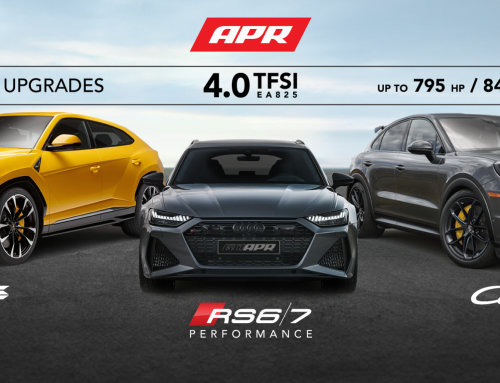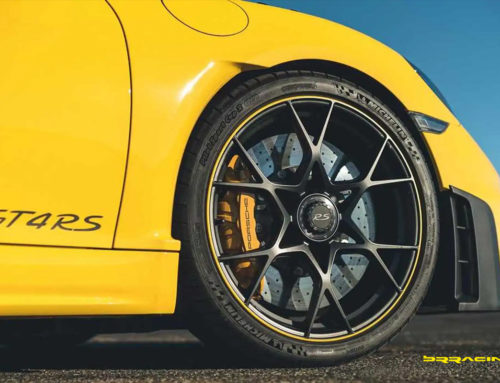Most readers of this www are fans of supercars…cars that truly embody all the great facets of driving a car….looks, speed, acceleration, braking, cornering, interior design, quality….but, all this greatness comes at a price. As a result, the evolution in the supercar space is fairly predictable…..at least, until now. McLaren, which broke with traditional wisdom when it built its F1 Supercar in the 1990’s, has now embarked on a much broader, and more ambitious undertaking, and is starting with the new MP4-12C. Not only is this a new supercar, but it intends to build 1,000 of them in the first year, and has already set up a dealer network (dealers are even close to our home base, as one is located in Palo Alto, CA ). Here are more details on what makes this new player so significant, and so well thought out and designed –

Universally accepted as one of the all-time greats, the McLaren F1 is a very hard act to follow. It was built between 1993 and 1998, and took it McLaren well over a decade to again launch a sports car under the company’s own name.
McLaren did not even attempt to build an actual replacement for the Le Mans winning supercar but grabbed the elements that made the F1 so very good and applied them to a design for a different, much higher-volume market segment. Production recently started for the all-new McLaren MP4-12C, which is priced at $231,400 and will compete directly with the Ferrari 458 Italia and Lamborghini Gallardo.
The MP4-12C was designed over a five-year period almost exclusively on McLaren’s world-class computers, which are also used for the manufacturer’s Formula 1 cars. This enabled the engineers to completely develop and even test each element of the car before a single part was constructed.
The key word in the 12C’s design is packaging. That was the key to the designers achieving a fine balance between performance, functionality and driver comfort. The radiators are, for example, mounted longitudinally alongside the engine to free up space in the nose for luggage and yet keep the car narrow enough to remain practical. The tight packaging also required every component of the MP4-12C to be bespoke, from the engine and gearbox to the knobs in the interior.
In 1981, McLaren pioneered carbon-fiber composite tubs in Formula 1, and with the F1 supercar brought the aerospace derived material to the road. For the MP4-12C a new, cost-effective construction method was devised that allows McLaren to construct the entire tub in a single piece instead of having to bond different parts together.
Known internally as the MonoCell, the hollow monocoque chassis is extremely rigid yet only weighs 175 pounds. In early crash-testing, the same tub was used for front and side impacts, surviving both crashes completely unscathed, and it could be used again without a problem. A chassis can be produced in just four hours, which is a fraction of the time needed to build a conventional multi-piece carbon-fiber tub. This cut in production time and cost is what enabled McLaren to use the carbon-fiber chassis in a market dominated by aluminum and steel constructions.

Squeezed into the very tight engine bay is McLaren’s very first “own” engine. Dubbed the M838T, it is twin-turbocharged V8 with a displacement of 3.8 liters. It produces nearly 600 horsepower and 443 pound-feet of torque, 80 percent of which is available as low down as 2,000 rpm.
The V8 is also incredibly efficient as it emits less CO2 per horsepower than any other internal-combustion engine available today, including the ones used in green hybrids. The engine is mated with a dual-clutch, seven-speed gearbox.
Although it may disappoint purists, there will be no optional manual gearbox; the footwell is optimized to house just two pedals. The paddles that operate the gearbox are mounted behind the steering wheel and move with it. Much like the shutter button on a camera can be partly pressed to enable autofocus, they can be partly squeezed to ‘pre-cog’ a gear and speed up shifts.
The lightweight, rigid chassis and the compact, powerful engine are backed up by a highly advanced suspension system. Double wishbones and coil springs are used all around, but that’s where the convention stops. The dampers fitted on each corner are active and completely adaptable to the road surface and conditions. They give the driver the best of both worlds; on the straights they will soften up for comfort and in corners stiffen up for superb road holding and control.
The driver can also pick three suspension modes on the Active Dynamics Panel. The biggest trick up the MP4-12C’s sleeve is “brake steer,” first seen on the 1997 MP4/12 Formula 1 car. This system helps cornering by squeezing the brakes slightly on the inside rear wheel. The same trick also works on acceleration out of a corner when the inside rear wheel can start to spin.
Performance, functionality and comfort were critical for the exterior design. Aerodynamics played a vital role in the very pure design. As with all of today’s sports-car designs, a balance between low drag and high downforce had to be found. The MP4-12C’s very smooth lines ensure the former while an active rear wing provides plenty of the latter.
With no radiators to clear, the nose is very low, which lowers the frontal area while giving the driver a very good view of the road. The air intakes behind the doors for the radiators feature turning vanes that resemble the McLaren logo. Needless to say, they are also functional as they direct the cooling air to the longitudinally mounted radiators.
The rear end has the most character with prominent exhausts surrounded by a big grille and black horizontal bars that also house the LED lights. The engine compartment is visible through a large window in the rear deck. Large glass surfaces all around provide the driver with unparalleled levels of visibility.olding and control.

Access to the comfortable interior is through large dihedral doors that are opened by swiping a hand underneath the broad shoulder running across the top of the door. The dihedral design uses just one hinge and allows for full access even in the tightest of spaces.
Functionality is also prevalent throughout the interior. All switches and buttons are mounted within reach of the driver and are grouped according to application. The most important information is presented to the driver in the binnacle behind the steering wheel, which features a very prominent tachometer. Additional info is presented in a screen mounted on the floating center console. The grip of the steering wheel is modeled after grips of the wheels used by McLaren’s World Championship-winning Formula 1 drivers.
Functionality even played a role in the deciding the name of the new McLaren. Except for the F1, MP4 has been used for all McLaren built since the company was acquired by Ron Dennis’ Project 4 in 1980. It originally referred to Marlboro Project 4 but more recently, it is short for McLaren Project 4.
The 12 represents a level of performance as determined on McLaren’s internal Vehicle Performance Index. Future models with different performance characteristics will receive a number according to their positions on the index. Easiest to explain is the C, which indicates that that MP4-12C uses a carbon-fiber chassis.
McLaren revealed the first details of the MP4-12C in the fall of 2009 even though production was not expected to commence in earnest until this year. This gives McLaren ample of time to test the car in all conditions and set up a dealer network.
A fleet of 20 test cars has already been constructed, which has already taught invaluable lessons that will be used for the full-scale production. They have been dispatched around the world for round-the-clock testing duties. In the first year, McLaren plans to build about 1,000 examples in a new, purpose-built factory. During the following years, McLaren plans to add one new model to the line-up every year.
The McLaren MP4-12C looks set to seriously shake up the segment dominated by Ferrari, Lamborghini and Porsche. Unlike any of its rivals, the MP4-12C sports the carbon-fiber chassis, and the level of quality boasted by the new McLaren should also be class leading.
Whether it will work as well on the road as it looks on paper remains to be seen, but there is no reason to doubt that. While the Italians may still have it cornered for pure passion, the MP4-12C will above all represent the most logical choice. It is a McLaren after all.
IF you’ve read this far….then, treat yourself to one of the recent VIDEOs about the tests of the new supercar – look fun to us.
ENJOY….one coming to a neighborhood near you soon.





Pretty! This was an extremely wonderful post. Thanks for providing these details.